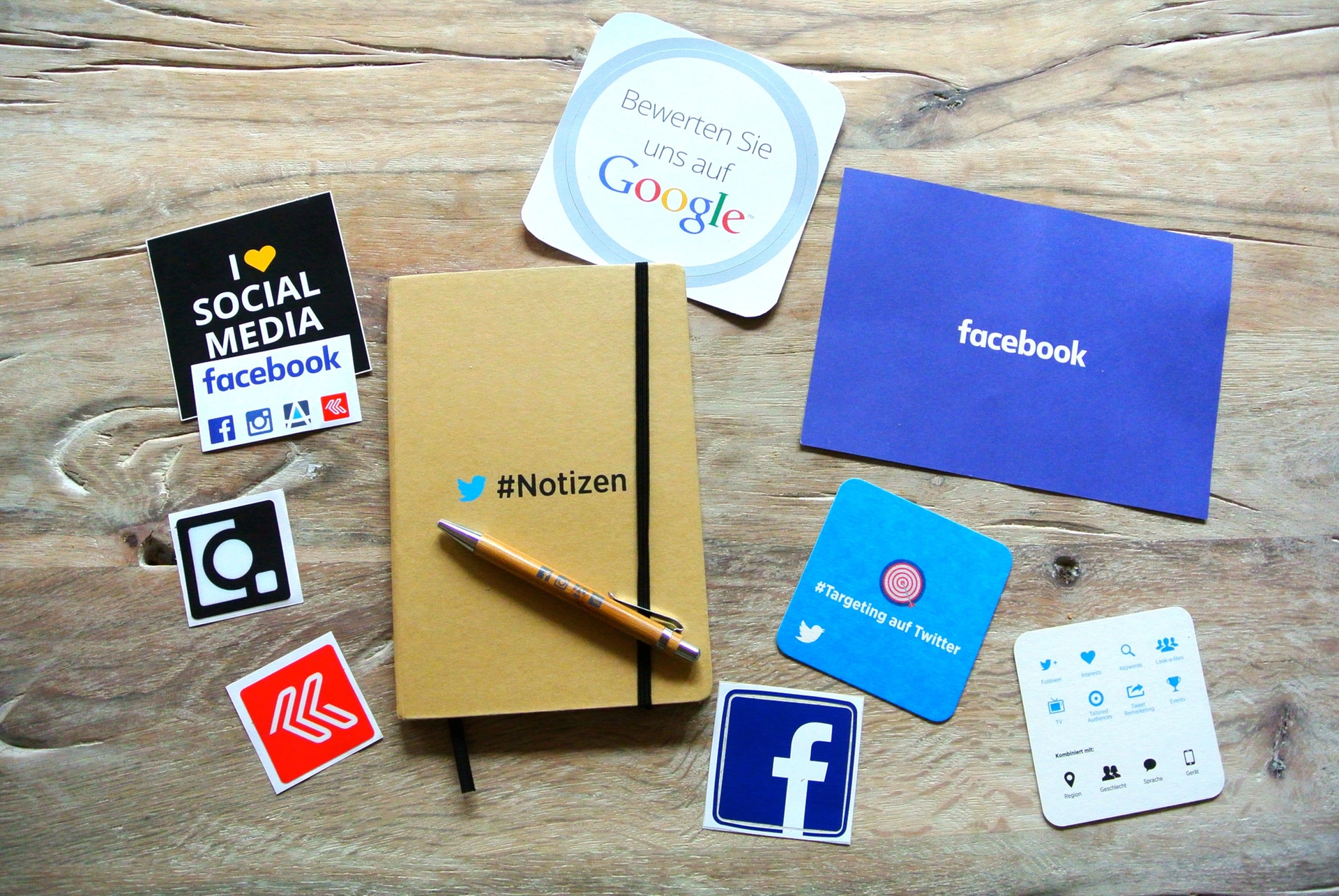For all of us content evangelists out there, it’s sometimes surprising that many companies, CEOs, and executives are still worried about putting their brand on social media.
It makes sense. From poor reviews, to trolls, to the litany of cases of bad social media judgement, there are reasons to be hesitant. It’s a scary social world out there.
But no more excuses. Social is quickly becoming one of the most important parts of your marketing strategy.
Here’s a brief list of some of the key benefits of a social-friendly company:
- Improved customer insight and access
- Better brand awareness
- Cheap advertising
- Increased conversions and leads
- Richer customer experiences and increased brand loyalty
- Increased web traffic and search engine ranking
- Easy information dissemination
- Improved employee retention and loyalty
And that’s just the beginning.
Social media and web presence are key to presenting the image that you are a reliable, trustworthy, and “smart” firm. How can you prove to your customers that you know what you’re doing if it looks like you can’t figure out Twitter?
We know it’s not easy. We hear your concerns. In fact, we’re here to answer them. Check out our top five exec excuses for skipping social media, and our myth-busting answers.
Concern #1: Social media will open us up to negative attention.
Answer: You’re right. Social media can give angry customers, aggrieved employees, and Internet trolls an “official” avenue to air their issues about your company.
You know what they would be doing if you weren’t on social? The exact same thing.Except it would be happening on your competitor’s site. Or on Reddit, where you’d be unable to reply or help. Even if they had an easily solvable issue.
When someone tweets that they had a bad experience with your company, you can use that experience to turn them into a lifelong brand advocate.
Think we’re joking? A micro-example:
Our amazing, fantastic, hilarious social editor occasionally* makes mistakes. Over the summer, we didn’t see a comment on one of our channels asking for assistance… until about two weeks later.
*literally just this one time
Not our finest moment. But finally, we got to it and sent out a well-crafted reply.
That person immediately replied with an enthusiastic thank you, shared one of our posts, and rated our business five stars on Facebook.
Immediately. Even after a two-week wait!
Your customer and client base wants to communicate with you, and they want to be heard. Sometimes, it’ll be for negative reasons, or even “we need assistance” reasons. You need to expect and understand that these comments will be publicly available.
But with social, you can provide them with the attention they want and the help they need. You can build your reputation – publicly – as a company that cares about their people and offers great service. Your customer base will thank you for it.
Concern #2: An individual employee can’t – or shouldn’t – speak on behalf of our company
Answer: Social media is an extremely powerful marketing tool. It really shouldn’t be the willy-nilly operation of one underpaid intern. And yet, that’s usually what happens in organizations that are on a tight budget.
It doesn’t have to be that way. You can easily set up a strategic plan that makes your social media marketing effective and organized, to be effectively executed internally or by a third party.
Set your organization’s social goals
Want more sales? Improved customer loyalty? Newsletter signups? Whatever it is, set one or two goals and write them down.
An entirely fictitious example: The Association of Dog Walkers of Ontario (ADWO) is a professional organization that wants more people to sign up for their membership, and more members to come to their twice-monthly online meetups.
Find your audience
Who is most likely to buy your product? What does that audience look like? Ignore everyone else.
ADWO did some research on their core audience and was able to create an audience persona for their typical potential member.
“Katie-Lynne” is a 21-year old B-student at U of T, in her third year, studying Psychology. Dog walking helps cover school costs. She walks three dogs every day, two of which are in her condo building, and a few more on weekends. She uses Facebook to keep up with friends, Twitter to share cute animal videos, and Tumblr to post about political topics.
Create micro-campaigns
Micro-campaigns are unique “topics” that are inherently tied to marketing strategy and help you meet your organizational goals.
The Association of Dog Walkers of Ontario wants to attract the Katie-Lynnes of Ontario, and have them want to join their community and attend meet-ups.
They create the following micro-campaigns:
- Cute puppies (videos)
- Animal-related memes (pictures)
- Event and meet-up information (posters and promos graphics)
- Interactions with dog lovers in Ontario (replies, shares, comments)
- Link to online meet-up when it’s happening (URL)
Hand this to your trusty social media coordinator
ADWO’s social media coordinator (corgi-nator?) now knows exactly what they’re posting, who they’re talking to, and what they want their audience to do.
It’s simple and effective. And it’s not one person speaking on behalf of your company, it’s a strategic, organization-wide plan. But your employees have the tools they need to execute it.
Concern #3: We don’t want to give away company secrets
Answer: Like what?
Unless you’re Coke or KFC, there aren’t too many things that you could share that would ruin your business model. It’s even arguable that in the current information-sharing, open-source Internet zeitgeist, online transparency proves that you’re a reliable, honest, and integrous organization.
Then again, your information is your information, and it’s totally up to you.
Still, your employees are on social media, even if your company isn’t. You need to decide what they can and can’t post about your company, and make sure they know what the rules are.
Craft a short and sweet social media policy (or steal one of these amazing bad boys).
Encourage your employees to follow your social accounts. Make social an integrated part of your company culture – including the rules about what is appropriate and what isn’t.
This may bring up more concerns…
Concern #4: We don’t want our employees spending their work time on social media
Answer: Employees have been wasting time on their computers since Solitaire was added to Windows 3.0 in 1990. Why not use that “wasted” time to improve your business?
We get it: your organization is a work-hard, get-in-get-out, time-is-money kind of place. You want your employees to be productive members of your organization, and do their fun times on their own time.
The thing is, more and more employees are looking for workplaces that support them as humans, rather than seeing them as cogs in an organizational machine.
Some statistics:
- 36% of employees would give up $5,000 a year in salary to be happier at work
- 35% of employees say their top motivations for changing jobs are the desire for work/life balance and higher compensation; 25% say it’s different work culture and wanting more challenging assignments
- Millennials who feel they’re at a great workplace are 25 times more likely to plan a long-term future at that workplace
- 22% of people have changed jobs due to work/life balance issues
“Fit” isn’t a fad. Company culture and work/life balance are the most important factors in your employee loyalty and retention. And going social is an easy, cheap, and productive way to improve your employee’s satisfaction at work.
Here’s how:
- Encourage employees to share informational or work-related content on their personal accounts.
Self-directed learning! Your people will read more, share helpful information with their colleagues, and act as content marketers for your business, all at the same time.
- Let employees tag your handle (like @arkemarketing) in their social profile.
Employees consciously post work-appropriate things when their profile includes their place of employment. It also directs traffic to your social media (and website), generating potential leads without you having to lift a finger.
- Get on the Slack (or any company chat) bandwagon
Our Arke work chat means our files don’t get lost in millions of emails, our employees are happier and more connected, and we get to share helpful tools and articles with each other. Our employee turnover is sitting at six percent (we lost one guy, that one time, to higher education. For shame!)
We’re a more accountable and productive team because of Slack.
- Create a virtual space for employees to contribute to your company’s social
If someone takes a great office photo, finds a totally relevant meme, or reads an insightful article, and then wants to get it on your social media page, how do they do it?
Make it easy with a social media dump on Slack, Trello, or Google Drive so employees can share relevant content. It will make them feel more involved, feel like they’re driving company culture, and makes your social media coordinator’s job that much easier. Crowdsource your own people for content.
Concern #5 We don’t want to send any prospects to the competition
Answer: Wait, what?
Why would a prospect go to the competition when they can:
- Find all of the information they need about your company’s location, contact information, and hours of operation easily from their phone?
- Quickly reach you to ask questions, request support, or set up a meeting without having to make a phone call?
- Feel connected to your brand because your posts are directly speaking to them, your core audience?
- Find interesting, insightful content on topics they care about on your feed?
Your prospects are your core social media audience. If you are speaking to them, engaging with them, posting relevant content for them, and offering valuable information, then why would they go anywhere else?
This is the power of social media. If you tailor your social to your target audience, you won’t have to chase them. They’ll come to you. Convinced? Not convinced? We’d love to help you set up your social or chat about our strategy. Send us a message!




